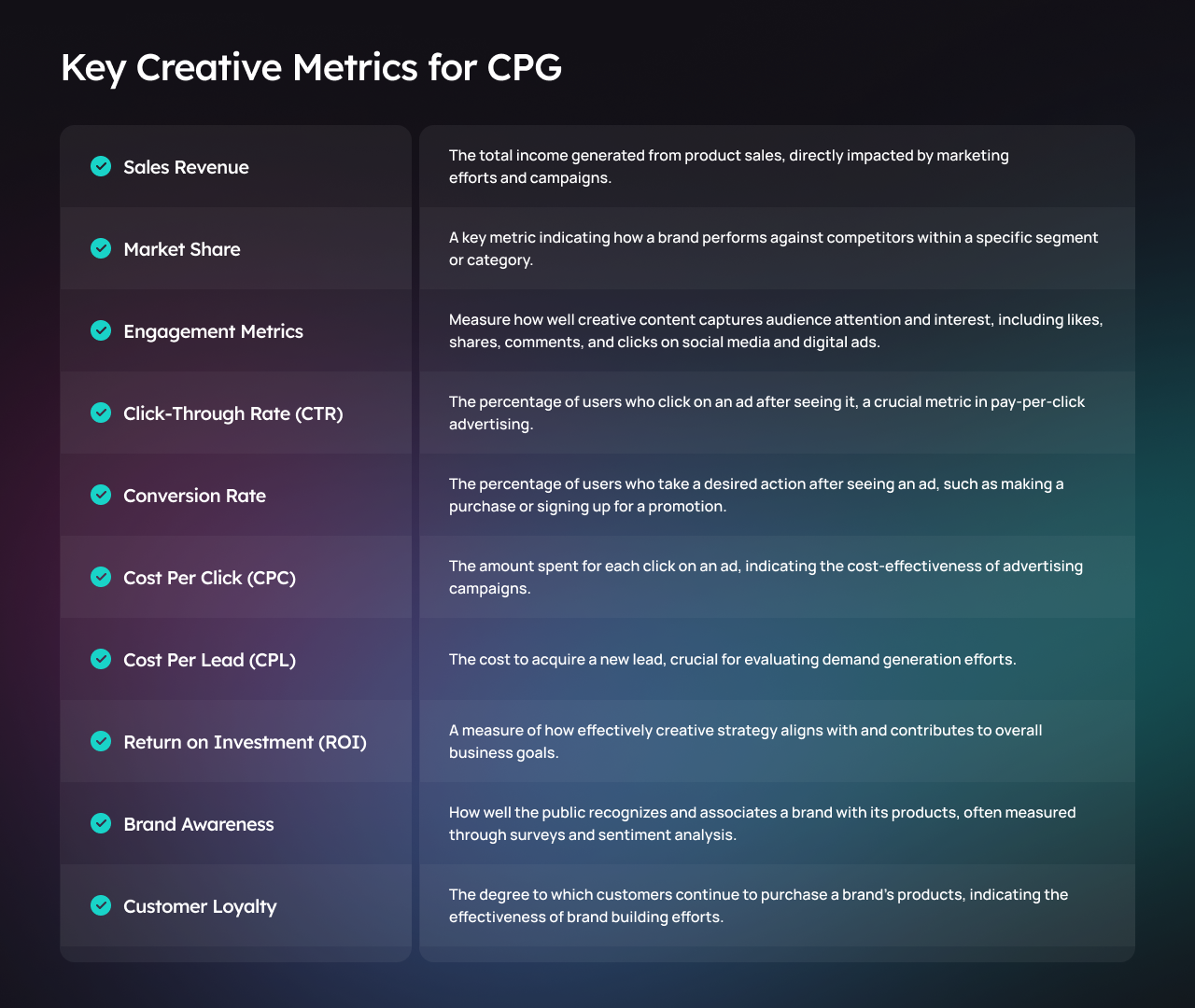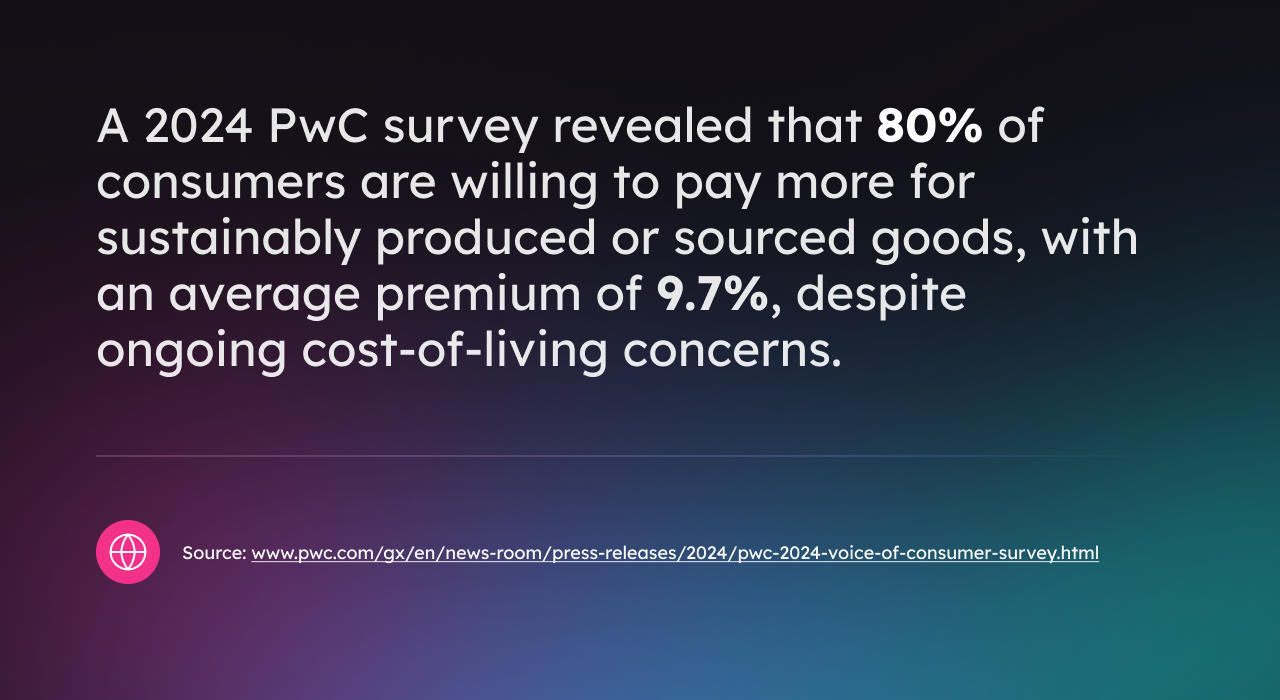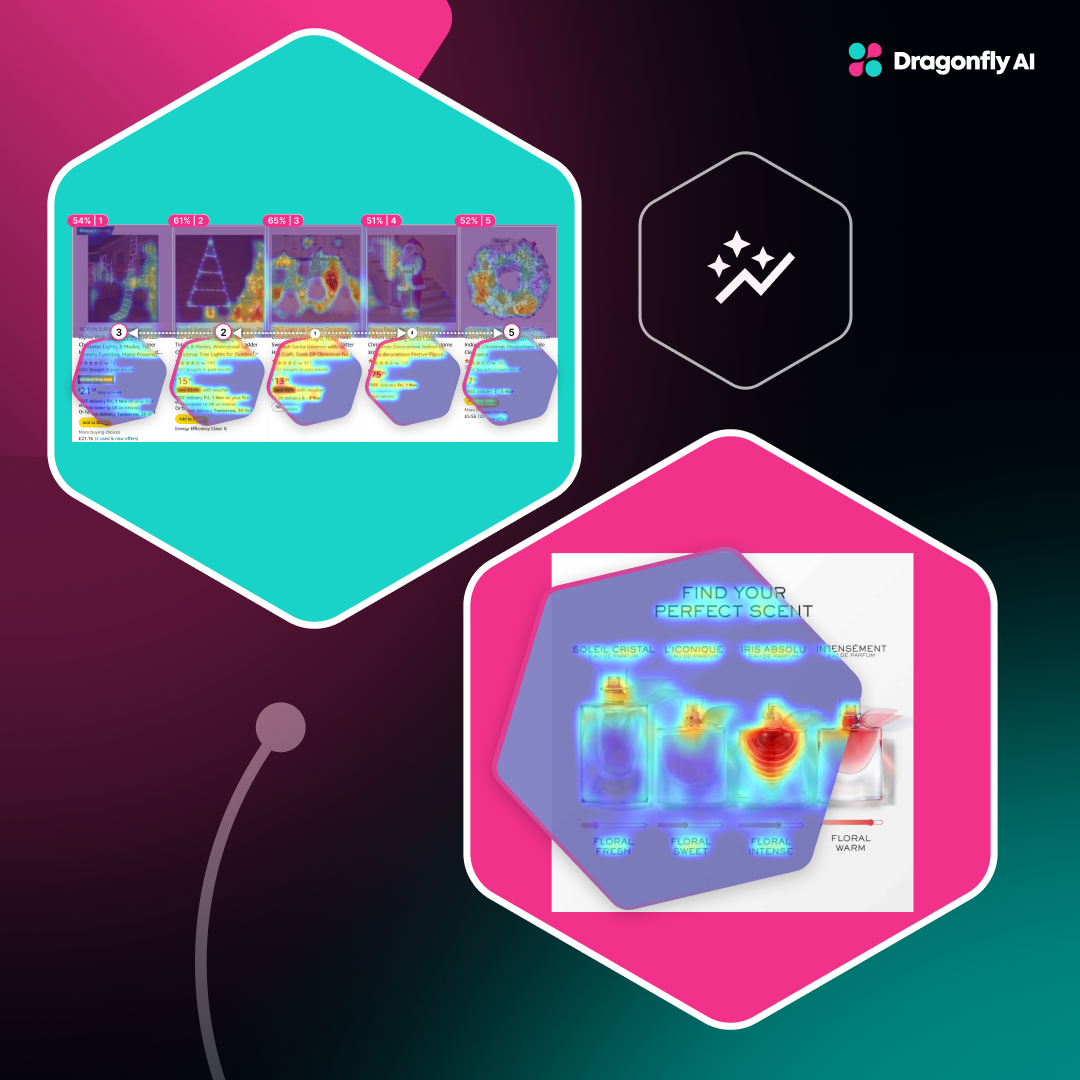In the past, creative optimization for CPG brands often meant iterating after the fact, testing a few campaign variants, then retrofitting learnings into future product launches. But the pace and complexity of today's global marketplace with its diverse consumer preferences, regional regulations, and omnichannel shopping behaviors demands a smarter, faster, and more integrated approach for CPG marketers.
While AI-driven creative testing provides solutions to a point, the real question for global CPG brands is: how can you scale this across dozens of markets, hundreds of SKUs, and thousands of creative assets simultaneously?
The answer: Connectivity.
By linking insights directly into the tools, teams, and technologies that drive creative work across your global CPG organization, brands can close the loop between ideation, execution, and optimization in real time, whether you're launching a new beverage in Latin America or repositioning a personal care product in Southeast Asia.
For CPG brands managing complex global portfolios, connectivity is the essential infrastructure for the next generation of high-performing CPG marketing that can adapt to regional nuances while maintaining brand consistency on a global level.
Why CPG Creative Optimization Needs a New Playbook
Creative performance for packaged goods isn't static. With shrinking attention spans, the explosion of retail media networks, direct-to-consumer channels, and increasingly fragmented shopper journeys, the idea of a "finished" creative asset is obsolete. CPG brands now need assets that adapt, learn, and improve instantaneously across diverse global markets.
The traditional playbook, where package designs and campaign creative are finalized, then measured months later through sales data creates critical delays in the hyper-competitive CPG space. Optimization must be continuous, dynamic, and systematized across your entire product portfolio and geographic footprint. That means embedding intelligence not just around creative, but within it.
For CPG marketers dealing with rapid innovation cycles and seasonal promotional calendars, solutions like Dragonfly Connect ensure that intelligence is part of the process as opposed to a testing add-on that further extends already tight timelines.
From Isolated Brand Teams to Integrated Global Ecosystems
Most global CPG organizations still operate with significant silos, brand teams in one market using their preferred platforms, regional performance marketing teams in another system, global analytics in a third. These disjointed approaches create friction, delay, and inconsistent consumer experiences across markets.
.png?width=1280&height=700&name=Blog%20image%201%20(28).png)
Connectivity bridges these gaps for CPG organizations:
- Packaging design software that integrates with predictive insight tools to test shelf impact before physical production
- DAM systems that update product images and messaging across all markets and retailers simultaneously when formulations change
- Unified dashboards that merge creative metrics with sales outcomes across both traditional retail and emerging channels
Forward-thinking CPG brands are moving toward ecosystems where consumer data informs creative before it's published, whether that's optimizing an e-commerce product detail page or testing which package design drives the most attention in a specific region. It's the most efficient process for launching creative at global scale, and the benefits are transformative for multi-brand portfolios.
The Benefits of Connectivity for CPG Creative Teams
Connectivity doesn't just help CPG marketers streamline operations; it transforms the creative process itself for brands managing vast portfolios across diverse markets. Here's how:
Creative Freedom Backed by Regional Consumer Data
Designers can access performance insights specific to each market within their tools, enabling creativity grounded in local consumer behavior rather than headquarters guesswork. This allows CPG brands to maintain global design systems while adapting to cultural nuances that drive purchase decisions.
Faster Iterations Across Product Lines
Real-time feedback allows teams to pivot mid-campaign instead of waiting for post-campaign analysis, critical for CPG brands launching seasonal variants or responding to competitive activity in specific markets.
Cross-Channel and Cross-Market Consistency
When a product formulation changes or claims are updated, one update can cascade across e-commerce platforms, retailer specifications, social assets, email, packaging templates, and programmatic platforms automatically, ensuring regulatory compliance and brand consistency.
Collaboration Without Geographic Bottlenecks
When insights flow freely between global brand teams and local market experts, decision-making becomes faster and more aligned, eliminating the delays that often plague multinational CPG organizations.
What Does a Connected CPG Creative Stack Look Like?
To reach this future, global CPG brands need to reconsider their tech stacks with a focus on integration. A connected creative optimization system for CPG includes:
Consumer Insight Engines
- Predictive analytics that forecast packaging performance across different retail environments
- Category-specific attention heatmaps showing how shoppers interact with products in digital and physical settings
- Consumer intelligence platforms that feed real-time trend data into the creative workflow, segmented by market
CPG-Specific Creative Platforms
- Design tools with embedded access to regulatory requirements by region
- Package design software that simulates shelf impact in different retail environments
- Asset libraries that automatically tag and organize product imagery by market, language, and compliance status
Seamless DAM/PIM Integration: The Central Nervous System of Connected CPG
For global CPG brands, Digital Asset Management (DAM) and Product Information Management (PIM) systems are no longer just storage repositories, they're the central nervous system of a connected creative ecosystem. When properly integrated with creative optimization platforms, these systems transform from static libraries into dynamic engines of creative efficiency:
The Connected DAM/PIM Advantage for CPG
- Single Source of Truth: Maintain one authoritative version of every product image, ingredient list, and nutritional claim across all markets and channels
- Automatic Compliance Updates: When regulations change in a specific market, affected assets are automatically flagged for review and update
- Version Control at Scale: Track which package designs and creative variants are approved for which markets, eliminating costly compliance errors
- Intelligent Asset Distribution: Automatically deliver the right format and resolution to each channel, from high-resolution images for printable in-store materials to optimized e-commerce assets
Real-Time Creative Optimization through DAM/PIM
The most advanced CPG brands are now implementing DAM/PIM systems that don't just store assets but actively participate in the optimization process:
- Performance-based asset ranking: DAM systems that automatically prioritize and recommend assets based on historical performance data
- Dynamic asset generation: PIM-connected systems that can automatically generate market-specific packaging mockups by pulling the latest product information and regulatory claims
- Localization workflows: Automated processes that route assets through translation, cultural adaptation, and regional compliance checks without manual handoffs
- Connected expiration management: Systems that track promotion dates, seasonal relevance, and licensing agreements across markets, automatically flagging assets that need updates
A Roadmap to Creative Connectivity for CPG Brands
The journey to a connected creative ecosystem won't happen overnight for large CPG organizations, but brands can take deliberate steps:
Step 1: Map Your Global to Local Workflow
Identify where insights are lost or delayed between global creative ideation and local market execution. Document how long it takes for consumer feedback to influence packaging updates or campaign adjustments in each region.
Step 2: Break Down Regional Silos
Encourage collaboration between global marketing, regional teams, R&D, regulatory, data, and tech departments. Create systems where insights from one market can benefit others without starting from scratch.
Step 3: Prioritize Platforms That Integrate Across Your Portfolio
Choose tools with open APIs or built-in partnerships that allow seamless data exchange between your brand portfolio management systems, creative tools, and retail execution platforms.
Step 4: Invest in Cross-Market Automation
Automate repetitive processes like asset localization, compliance checks, testing feedback, and retailer-specific media deployment to free up time for higher-value creative thinking.
Step 5: Develop Global Measurement Standards
Create unified metrics that allow creative performance comparison across different markets, channels, and product categories within your portfolio.

Real-World Impact: What Connectivity Looks Like in Action for CPG
Imagine a global CPG brand launching a new sustainable personal care product line across multiple markets. Through a connected ecosystem:
- Packaging designers use AI-generated attention insights inside their tools to optimize shelf impact specific to different retail environments—from European hypermarkets to Southeast Asian convenience stores
- Global-to-local adaptation is streamlined as core design elements are preserved while messaging is automatically adjusted for regional regulations and cultural preferences
- Pre-launch testing is conducted across key markets, and the winning variants are automatically published across all relevant platforms and retail partners
- Campaign results feedback in real time, allowing mid-flight creative swaps in under 24 hours when certain messages resonate better in specific regions
- Cross-selling opportunities are identified through connected data, revealing which product combinations drive basket size in different markets
The Future for CPG: Predictive, Personalized, and Always-On
The goal of creative connectivity for CPG brands is not just efficiency across markets, it's effectiveness across the entire consumer journey. When systems are integrated, global brands can move toward:
Predictive Optimization for New Product Development
Using historical and behavioral data to optimize packaging and creative elements before launch, reducing the costly failure rate of new CPG products.
Personalized Shopper Journeys at Global Scale
Delivering relevant creative to every audience segment across markets, powered by shared intelligence that maintains brand equity while addressing local preferences.
Always-On Performance Across Retail Ecosystems
Creating campaigns that evolve based on real-time feedback from both traditional retail channels and emerging digital marketplaces, adapting automatically to market shifts and competitive activity.
Sustainability Messaging That Resonates Locally
Developing connected creative systems that can adapt environmental claims and sustainability messaging to meet diverse regional regulations and consumer expectations.

Connectivity makes CPG creative truly agile, ready to meet the needs of fast-moving global consumer trends while navigating the complexity of different market conditions.
Creativity Without Limits for Global CPG Brands
Connectivity isn't just a technical evolution; it's a creative revolution for CPG marketers. By unifying insight, execution, and iteration across your global organization, brands can finally break free from the historically slow, reactive processes that have limited innovation in the packaged goods sector.
The future of creative optimization for CPG is dynamic, connected, and intelligent. Brands that embrace this shift won't just optimize creative assets, they'll optimize growth across markets, consumer relevance across segments, and competitive edge across categories.
For global CPG organizations looking to thrive in an increasingly complex retail landscape, connected creative isn't optional, it's essential.
Speak to our expert team on how to get your creative connected here.
